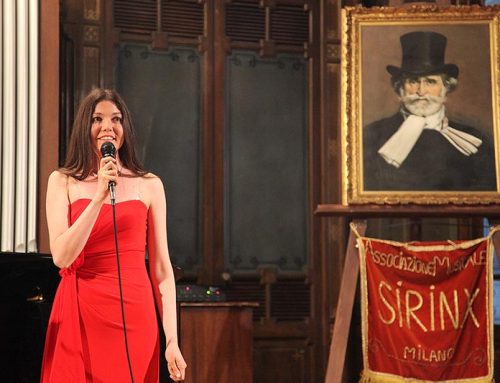Fanes Poem Musical
The music in the Musical Poem Fanes tells the legend of Fanes with an emphasized dramatic approach underlined with archaic melodies in an experimental musical style, where present and past, dream and reality are connected to the magic atmosphere of the legend.
Most of the songs –see the original Ladin lyrics and the text in English in the section LYRICS– are monodies where the soprano voice is accompanied by violin, transverse flute, trombone and keyboard with various sound effects.
The soprano voice tells the legend and is at the same time part of it, so that the many sung parts without words represent the mysterious voice of the female supernatural figures of the legend, of princess Dolasila and of the Ganes (nymphs). The sung parts telling about the happenings in the legend should remind of a “recitativo” character while the songs which describe Dolasila’s feelings –“Ermes d’ arjënt”, “Nosc amor”, “La ciaceda de Ey de Net”, “Dolasila dan l scumbat de Prelongià ”– are meant to be “arias” with a dramatic accent related to Dolasila’s tragic destiny as she is doomed to fight till death because of the longing for increasing power of her father so that her love for the enemy prince Ey de Net won’t be fulfilled.
There are many correspondences between the structure of the music and the text of the lyrics set to music, particularly evident when the text tells of a direction –f. ex. “crushing down” / “splunfea ju” in “L sënn de Spina de Mul” corresponds to a descending interval, “flowers wake up” / “cuca su” in “Nosc amor” corresponds to an ascending interval, “
The only song in the whole poem in major modality is “Le Ćiastel de Fanes” (“The Castle of Fanes”), where the lyrics describe Dolasila’ s happiness as there seems to be hope to fulfil her love for the enemy prince Ey de Net.
The music shows the constant research of a particular style bound to the nature of the Dolomites’ mountains as guardians of ancient myths, where the perception of rhythm and sound is freed from conventional time and finds in the dimension of dream its privileged reality.



